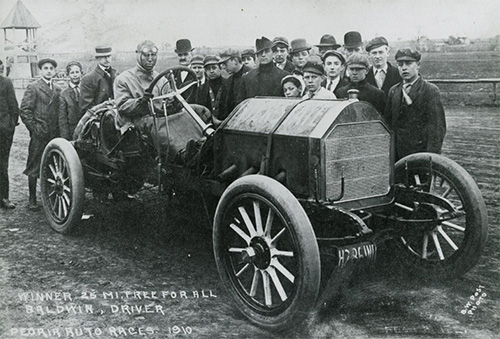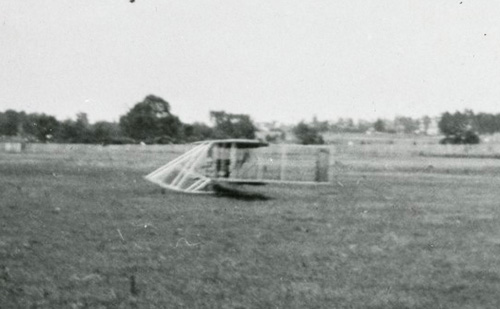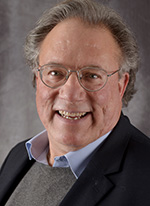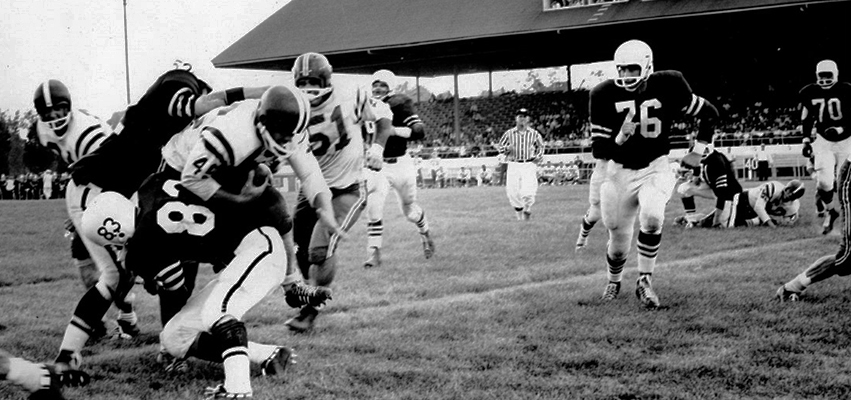
(Photo courtesy of the f-stop Collection, Special Collections Center, Bradley University Library)
Long before the state lottery, riverboat casinos and video gaming, Peoria looked toward gambling for a financial boost.
Debuting in 1895, Peoria Exposition Park touted horseracing as a benevolent spark to ignite the local economy. As the Peoria Daily Transcript raved, “The enterprise has been undertaken not with a view of making money out of it, but of doing something for the city.”
The track saw some success but got squeezed to death by the Depression. Still, it left a footprint for one of the city’s most enduring community touch points: Peoria Stadium, which is about to undergo $11 million in renovations to remain a home to high school sports.
Toward the end of the 19th century, Peoria’s 41,000 residents enjoyed a booming economy, led by its thriving distilleries that had given the city the nickname of “Whiskey Capital of the World.” But with the majority of businesses focused on the downtown, a quartet of investors eyed an expansion of the footprint of local commerce. In 1895, the foursome plunked down $50,000 for 82 acres of farmland in Richwoods Township, at the time just north of city limits.
The investors aimed to create a new hotspot for parimutuel wagering. At the time, Lake View Park, near downtown, lured bettors for bicycle and horse races. But Peoria Exposition Park boasted grand plans as an entertainment destination, so much so that the investors convinced the Central City Rail Road to extend its Knoxville Avenue line past city limits to the track. That way, more people could play the ponies, and the rail line would enjoy more ticket sales.
Meanwhile, workers worked feverishly all summer to build a 1-mile oval track, plus a grandstand and paddock, along with dining and bar facilities. Civic leaders fanned great expectations of great municipal benefit from the site. On the eve of opening day, the Daily Transcript gushed, “If this meeting is a success, it means that in the future Peoria will have a summer opera house, a place for baseball, for tennis and for every legitimate and manly amusement.”
After that first day of harness racing, post times ran solidly Tuesday through Thursday for decades. The site also hosted other merriment, such as automobile races as early as 1910, along with an airplane exhibition in 1911, just eight years after the Wright Brothers’ pioneering flight.

An amusement park was added in 1926. The next year, greyhounds took over the racing oval to create a new brand of excitement.
But as the Depression befell Peoria and the nation, gambling money became scarce. The track shut down in 1931.
The Peoria School Board took a gamble five years later, spending $300,000 — $6.3 million in today’s dollars – on the property and renovations. The spot soon hosted football, including the annual Turkey Day battle between Manual and Peoria high schools. The site would host other teams, including Bradley Braves football and Peoria Redwings women’s baseball, along with fireworks displays, swine shows and other huge gatherings.
By the 1970s, the property – by then known as Peoria Public Schools Stadium – had fallen into disrepair. The place got a $52,000 makeover, thanks to extensive fundraising, much of it at the hands of local legends Pete Vonachen, the longtime restaurateur, businessman and owner of the Peoria Chiefs, and Jim Maloof, the real estate mogul and former Peoria mayor.
With the promised renovations, the old racing site is about to get a new life.





